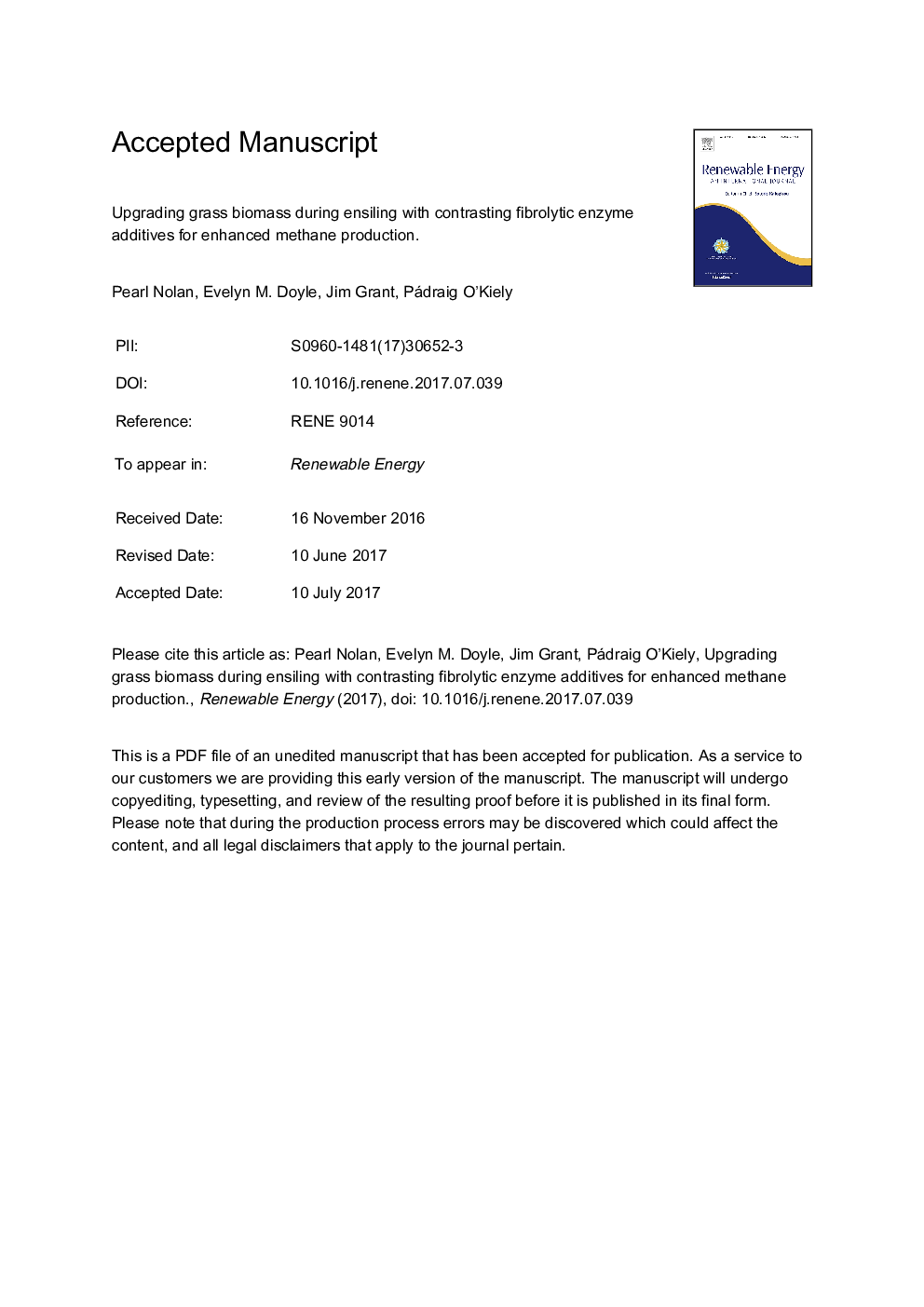| Article ID | Journal | Published Year | Pages | File Type |
|---|---|---|---|---|
| 6765240 | Renewable Energy | 2018 | 33 Pages |
Abstract
The aims were to quantify the effects of applying fibrolytic enzymes at ensiling on conservation characteristics and specific methane (CH4) yields (SMY) per unit mass, and per unit land area. At two stages of primary growth, four replicate plots of two species (perennial ryegrass and timothy) were subjected to nine treatments, an untreated control and four fibrolytic enzymes (ENZ 1-4) applied at two enzyme dosage rates (low and high) prior to ensiling. Silage SMYs were subsequently determined in an in vitro batch anaerobic digestion test. Generally, applying fibrolytic enzymes at ensiling reduced total fibre compared to control silages, which consequently enhanced mass-SMY and area-SMY. However, the impact on fibre, mass-SMY and area-SMY differed depending on both grass species and growth stage at harvest, with no single enzyme being consistently superior. Thus the potential of enhanced methane output with added enzymes at ensiling is both fibrolytic enzyme and grass substrate specific.
Related Topics
Physical Sciences and Engineering
Energy
Renewable Energy, Sustainability and the Environment
Authors
Pearl Nolan, Evelyn M. Doyle, Jim Grant, Pádraig O'Kiely,
